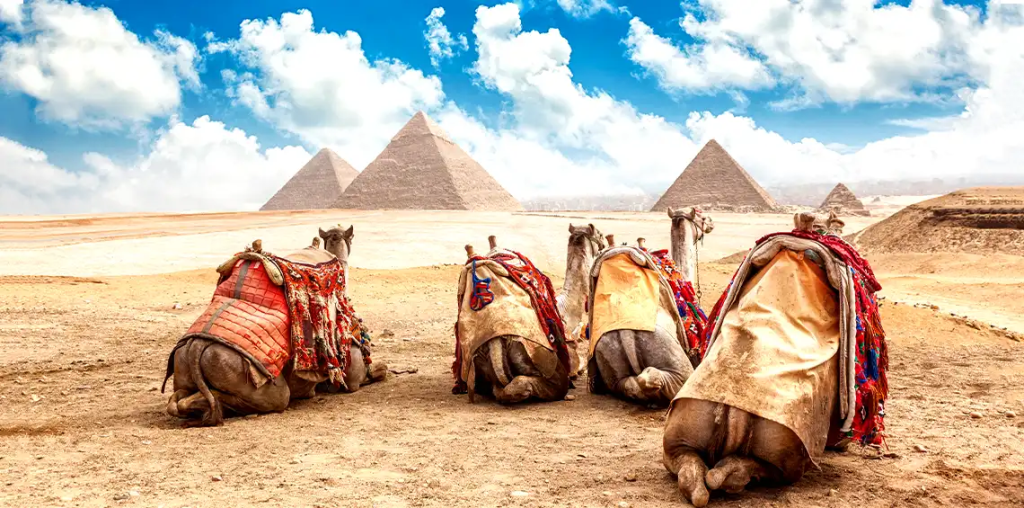
Beneath the waters of the Mediterranean Sea lies a submerged world that was once a thriving center of civilization—the Lost City of Heracleion. This ancient metropolis, steeped in history and myth, remained hidden for centuries until its rediscovery captivated the world. In this captivating blog post, we embark on an underwater expedition to explore the fascinating history, cultural significance, and mysterious allure of the Lost City of Heracleion.
A Sunken Kingdom Revealed: The Lost City of Heracleion, also known as Thonis-Heracleion, was once a bustling port city located at the mouth of the Nile River. It served as a gateway to Egypt and a hub for trade, cultural exchange, and maritime activity.
Myth and Reality: Heracleion’s origins are intertwined with mythology, as it was believed to have been founded by Heracles himself. However, historical records corroborate its existence as a real city that thrived for centuries before its eventual submersion.
Uncovering the Past: The city’s rediscovery in modern times was a monumental archaeological achievement. Divers and researchers uncovered a treasure trove of artifacts, statues, inscriptions, and architectural remnants that offer a glimpse into the life and culture of ancient Heracleion.
An Intersection of Cultures: Heracleion’s role as a bustling port city brought together cultures from across the Mediterranean. Its ruins reveal a melting pot of Egyptian, Greek, and other civilizations, showcasing the cosmopolitan nature of its society.
Religious Significance: Heracleion was home to significant religious structures, including temples dedicated to Egyptian deities and Greek gods. The city’s spiritual tapestry reflects the syncretism that characterized its cultural landscape.
Tracing the Mysteries: The reasons for Heracleion’s submersion remain a subject of intrigue and speculation. Natural disasters, such as earthquakes and rising sea levels, are often cited as potential causes, but the full story remains shrouded in mystery.
Archaeological Insights: The artifacts recovered from Heracleion’s submerged ruins provide invaluable insights into ancient trade routes, artistry, maritime technology, and daily life. These discoveries continue to reshape our understanding of the region’s history.
Preservation and Exploration: Efforts to preserve and explore the Lost City of Heracleion are ongoing. Responsible underwater exploration, conservation initiatives, and scientific research ensure that its secrets are unearthed while respecting its fragile environment.
An Invitation to Imagination: As we explore the remnants of the Lost City of Heracleion, we’re invited to use our imagination to reconstruct the scenes of its bustling markets, grand architecture, and cultural vibrancy. The city’s submerged beauty sparks our curiosity about the lives of those who once walked its streets.
Whether you’re drawn to the majestic pyramids, the serene temples of Luxor, the bustling markets of Cairo, or the tranquil banks of the Nile, our Egypt private tours cater to every traveler’s preferences. Allow us to take care of the logistics, leaving you free to immerse yourself in the wonders around you.

4 Days Cairo and Abu Simbel Tour Package
Embark on an unforgettable 4-day tour package to Cairo and Abu Simbel, where ancient wonders and majestic temples await. Explore the iconic sites of Cairo, including the pyramids of Giza and the Egyptian Museum, before journeying to Abu Simbel to witness the breathtaking temples of Ramses II and Nefertari. With our carefully curated itinerary, knowledgeable guides, and inclusive services, this tour offers a compact yet immersive experience of Egypt’s rich history. Discover the secrets of the pharaohs, marvel at awe-inspiring architecture, and create lasting memories View Tour Details

5 Days Cairo and Alexandria Tour Package
Embark on a 5-day journey through Egypt’s most fascinating cities, Cairo and Alexandria. From the grand pyramids and ancient temples to the coastal beauty and cultural landmarks, this tour package is designed to showcase the best of both worlds. With expert guides, comfortable accommodations, and convenient transportation, you’ll have an immersive and hassle-free experience. Join us on this captivating adventure and create memories that will last a lifetime View Tour Details

6 Days Cairo, Luxor, Aswan & Abu Simbel Package
Embark on an extraordinary 6-day journey through the heart of ancient Egypt with our Cairo, Luxor, Aswan & Abu Simbel package. Begin your adventure in Cairo, where you’ll explore the iconic pyramids and delve into the treasures of the Egyptian Museum. Continue to Luxor and Aswan, where you’ll witness the grand temples along the Nile River, and conclude your tour with a visit to the awe-inspiring temples of Abu Simbel. With expert guides, comfortable accommodations, and hassle-free transportation, this package offers a comprehensive exploration of Egypt’s historic sites. Join us on this incredible journey and unlock the secrets of the pharaohs View Tour Details

7 Days Cairo, Luxor & Alexandria Tour
Experience the best of Egypt’s cultural and coastal attractions with our 7-day Cairo, Luxor & Hurghada holiday. Begin your journey in Cairo, where you’ll discover the iconic Pyramids of Giza, explore the ancient artifacts at the Egyptian Museum, and immerse yourself in the vibrant atmosphere of Egypt’s capital. Then, travel to Luxor, often referred to as the world’s greatest open-air museum, where you’ll explore magnificent temples, tombs, and archaeological sites. Finally, unwind in the idyllic beach destination of Hurghada, known for its pristine beaches and vibrant marine life. With comfortable accommodations, expert guides, and hassle-free transportation, this holiday package provides a well-rounded experience of Egypt’s rich history and natural beauty View Tour Details
Related Egypt Tours Blog

The Alexandria Library, officially known as the Bibliotheca Alexandrina, is a cultural and educational complex that pays homage to the ancient Library of Alexandria, one of the most famous libraries of the ancient world. The modern library serves as a hub for research, learning, and cultural exchange, featuring a vast collection of books, manuscripts, and multimedia resources. Our guided tour offers you the chance to immerse yourself in the intellectual and architectural marvels of the Alexandria Library View Tour Details

The Catacombs of Kom El Shuqqafa
The Catacombs of Kom El Shuqqafa, also known as the “Mound of Shards,” are a fascinating underground burial complex that date back to the Roman period in Alexandria. This necropolis is a unique testament to the convergence of Greek, Roman, and Egyptian cultures, evident in its art, architecture, and rituals. Our guided tour offers you the opportunity to step back in time, explore the underground chambers, and uncover the stories of the past that lie within the catacombs’ depths View Tour Details

The Qaitbay Citadel, also known as the Fort of Qaitbay, is a historic fortress located on the Mediterranean coast of Alexandria. Built in the 15th century, the citadel was constructed to defend the city against potential naval invasions. Today, it stands as a reminder of Alexandria’s maritime heritage and serves as a popular tourist attraction. Our guided tour offers you the opportunity to step back in time, explore the citadel’s architecture, and absorb the sweeping views of the sea View Tour Details
The Lost City of Heracleion FAQs
- What is the Lost City of Heracleion? The Lost City of Heracleion, also known as Thonis-Heracleion, is an ancient city that was submerged underwater off the coast of Egypt’s Mediterranean Sea.
- Where is the Lost City of Heracleion located? The city is located near the modern city of Alexandria and was discovered in the Abu Qir Bay area.
- When was the Lost City of Heracleion discovered? The city’s remains were discovered in the early 2000s by underwater archaeologists using advanced technology and techniques.
- Why did the Lost City of Heracleion submerge underwater? The city is believed to have sunk due to a combination of geological shifts, rising sea levels, and possibly natural disasters like earthquakes.
- What is the historical significance of the Lost City of Heracleion? The city was a significant port and trade center in ancient Egypt and held cultural and commercial importance in the region.
- What artifacts have been found in the Lost City of Heracleion? Archaeologists have discovered a wide range of artifacts, including statues, pottery, jewelry, coins, and religious objects that provide insights into daily life and culture.
- Can visitors access the Lost City of Heracleion? While the city’s remains are underwater and not accessible to casual visitors, there are virtual tours and exhibitions that showcase the artifacts and findings.
- Is there an entrance fee for visiting exhibitions about the Lost City of Heracleion? Exhibitions that display artifacts from the Lost City might have entrance fees, but it’s advisable to check with the hosting institution.
- How have researchers studied the Lost City of Heracleion underwater? Researchers have used underwater excavation techniques, remote sensing technology, and divers to explore and document the submerged city’s remains.
- What can visitors see in exhibitions about the Lost City of Heracleion? Exhibitions often display some of the artifacts recovered from the underwater site, along with images and information about the city’s history.
- Are guided tours available for exhibitions about the Lost City of Heracleion? Guided tours might be available for visitors to exhibitions, providing historical context and insights into the city’s significance.
- What is the best way to learn about the Lost City of Heracleion’s history? Visitors can learn about the city’s history through exhibitions, documentaries, articles, and academic studies conducted by archaeologists.
- Can visitors learn about the process of discovering the Lost City of Heracleion? Yes, many exhibitions and documentaries provide information about the discovery process, the underwater archaeology techniques used, and the challenges faced.
- What is the significance of the Lost City of Heracleion in the study of history? The discovery of the submerged city has added to our understanding of ancient trade routes, maritime history, and the cultural exchange in the region.
- Are there any plans to make parts of the Lost City of Heracleion accessible to divers or tourists? As of now, there are no known plans to make the submerged city accessible to divers or tourists due to the challenges posed by preservation and underwater conditions.
- What other submerged cities or ancient sites have been discovered in similar ways? Other submerged cities, such as Pavlopetri in Greece and Baiae in Italy, have also been discovered and studied using underwater archaeology.
- How does the Lost City of Heracleion contribute to our understanding of ancient Egypt? The city’s remains provide valuable information about the daily life, trade, religion, and architecture of ancient Egypt’s port cities.
- Is there ongoing research related to the Lost City of Heracleion? Archaeologists and researchers continue to study and analyze the artifacts and data from the site to gain further insights into the city’s history.
- What challenges are faced in preserving and studying underwater archaeological sites? Challenges include maintaining the integrity of artifacts underwater, dealing with preservation issues, and navigating the complex underwater environment.
- How can visitors show appreciation for the significance of the Lost City of Heracleion? Visitors can learn about the city’s history, support exhibitions that feature its artifacts, and help raise awareness about the importance of preserving underwater heritage sites.

